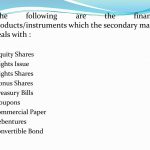
 Definition
Definition
A seller is an individual, or entity, who exchanges any good or service in return for payment. In the financial markets, a seller is a person or entity who is offering a security they hold to be purchased by someone else. In the options market, a seller is also called a writer. The writer is on one side of the contract and receives a premium for selling the option.
A seller is any individual or entity, such as a broker or hedge fund, that engages in offering any financial security—stocks, options, commodities, currencies, or others—for purchase. It could involve instruments traded in marketplaces outside the regulated exchanges. The securities offered for sale include the selling of derivatives contracts, fine art, precious jewels, and many over the counter (OTC) assets.
When selling an asset or security, the seller is someone who already owns the asset or security and wishes to get rid of it. Someone else will purchase it. Short selling is the act of selling something that is not owned. It is selling first and buying later (to close the position), hopefully at a lower price. Short sellers try to take advantage of falling prices.
In the options market, a seller is an entity who writes the option contract and collects the premium from the buyer in return for having sold the option. The seller also takes the risk of having the option exercised, which could result in losses greater than the premium received if the option is naked (not covered). The terms selling an option, shorting an option, and writing an option are equivalent.
Being the writer of an option is relatively risky when compared to other types of investment activity. For example, the writer of a call option is obligated to sell a specific number of shares of an underlying stock if the price moves above the strike price before the option expires. Theoretically, the risk to the option writer is unlimited as there is no limit to how high a stock can move.
Selling an option is associated with writing an option, but a buyer of an option may also want to sell the option at some point before expiration. When an owned option is sold, it is called a sell- to- close. The act of selling, in this case, doesn’t result in another option being written, it simply closes out an existing position.
Reducing Option Seller Risk
The simple sale of an options contract is called a naked put or naked call, depending on the option type. It means that the seller takes the full risk of adverse moves in the underlying security. If the buyer exercises the option, the seller must go into the open market to sell or buy the underlying security at the current market price.
However, with a covered call or covered put, the seller of the option already has a long or short position in the underlying asset. If the underlying asset is purchased or sold short at the same time as writing the covered options, the loss would be minimal. The seller of the option still gets to keep the premium received from the buyer.
There are many strategies involving the sale of options. As an example, in a bull put spread, the investor sells a put option and at the same time buys a put option with a slightly lower strike price. The premium paid for the purchase of the lower strike option partially offsets the premium received from the sale of the higher strike option. While the strategy reduces the risk to the investor, it also reduces the potential profit.
Determining When to Sell
Experienced investors determine when to sell a stock, currency, futures contract, commodity, or any other asset, by following a trading plan. A trading plan lays out their strategy, including when they will exit positions, so that they don’t get caught up in emotion and make rash decisions which could hurt their portfolio.
Exit strategies vary greatly, but should always include two considerations:
- Where and when to sell if the position is showing a loss.
- Where and when to sell if the position is showing a profit.
Before taking a trade, a prudent investor or trader will determine when they will cut their losses, and also formulate a plan for when they will take profits if the price moves in their expected direction.
A stop loss order or a trailing stop is a common way to limit losses. A trailing stop or profit target are common ways to take profits off the table.
A Seller in the Stock Market- An illustration
Assume that an investor saw a significant decline in the price of BPCL as a buying opportunity. They decided that if the price fell to support, or below it, they would buy when the price started to bounce higher off it again.
The investor decides that if the price drops to Rs.150, or below, they will buy when the price starts rising above Rs.150 again. They set a stop loss at Rs.135, which exposes them to 10% downside risk. They plan to exit at Rs.200 if the price goes up. This is their profit target. The trade offers 10% downside with 33% upside; a favorable risk/reward ratio .
A stop loss sell order is placed at Rs.135. A sell limit order is placed at Rs.200. The investor becomes a seller at these prices, and whichever one is hit first will close the position.
Financial and Business expert having 30+ Years of vast experience in running successful businesses and managing finance.





